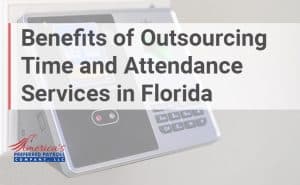Every business needs to process payroll. However, most business owners and managers don’t have the highly specialized expertise, software, or time necessary to process payroll accurately and comprehensively. There is no shame in leaning on the payroll processing experts to do this work on your behalf. In fact, it is in your interest to do so. Let’s take a quick look at what goes into processing payroll
The Basics of Payroll Processing in 2022
Payroll is the process necessary to pay employees. Processing payroll is inherently challenging as employees make different amounts of money and have unique withholdings. Some employees’ paychecks are garnished for child support and unpaid debts such as student loans and credit cards. Furthermore, specialized software is necessary to organize and calculate the details of payroll. There is also the challenge of depositing earnings into employee checking accounts or possibly even cutting paper checks. Add in the fact that information pertaining to employee wages/salaries, withholdings and other payroll details must be saved for posterity’s sake and the challenge of payroll is compounded all the more. This is precisely why most business owners and managers lean on the outside payroll specialists to process payroll on their behalf.
Processing Payroll Begins With Collecting Data
Extensive data collection and input are necessary to set the stage for payroll to be processed accurately and efficiently. Adding a new employee requires collecting that individual’s information on a W-4 form. This form details the number of tax dollars to be withheld from paychecks as well as the employee’s name and contact information. Employers are also tasked with collecting employees’ checking account numbers along with account routing numbers to directly deposit earnings. Most companies choose to relay this information to a payroll processing specialist that inputs the data and processes payroll.
Calculating Time Worked
Employee time on the clock is the number of hours that an individual worked in a specific pay period. Hourly employees are required to track their time working with a timecard, by punching a traditional or digital timecard clock or through other means. Salaried employees and some hourly employees who work in white-collar settings typically fill out a Microsoft Excel spreadsheet or Microsoft Word document that serves as a timesheet. This timesheet is forwarded to a supervisor who reviews it and transmits it to the payroll processor. The vast majority of nonexempt employees qualify for overtime pay in accordance with the rules established by the Fair Labor Standards Act (FLSA).
Overtime pay for nonexempt employees is the regular rate of pay at a 1.5 multiple. Overtime pay is applicable to a nonexempt employee’s hours that extend beyond the 40-hour mark each week. However, exempt employees typically do not qualify for overtime compensation. Add in the fact that each state has unique labor laws that shape overtime pay requirements and rates for employees and the challenge of determining exactly how much an employee should be paid becomes all the more complicated. As a result, most employers outsource payroll processing to payroll specialists.
Determining Employees’ Net Pay
An employee’s net pay is his or her gross pay with tax withholdings and certain payments related to benefits subtracted. Examples of withholdings taken out of paychecks aside from federal and state taxes include taxes for Social Security and those for health insurance. Furthermore, retirement contributions such as money redirected to a 401(k) investment account will be taken out of employees’ compensation prior to them being compensated for their hard work.
What About Additional Employee Income?
Forms of additional employee income ranging from tips to bonuses and commissions complicate payroll that much more. Additional income is applicable to sales personnel who are dependent on sales commissions for much of their income, service workers who are dependent on tips to pay the bills, and all employees eligible for bonuses. Both state and local laws must be adhered to in the context of additional employee income as these forms of additional compensation have the potential to be taxed at a higher clip than regular wages/salaries. Tips are a particularly nuanced form of additional income as there is the potential for the state’s laws pertaining to the minimum wage to come into play. In some states, tips are considered as a component of overarching hourly pay. However, according to the FLSA, a worker is required to earn in excess of $30 of tips in a single month for that additional income to impact the pay rate. If tips paid to employees combined with the hourly wage are less than the minimum wage, the employer is required to make up the difference, ensuring the employee is paid the minimum wage at the very least.
The Payment Process
Once taxes, wage garnishments, and other withholdings are withheld, the employee’s net pay is calculated and transmitted to his or her checking account through direct deposit. However, some businesses still choose to issue paper checks. The average business does not have the software or machinery necessary to transmit direct deposit checks or cut paper checks so this work is outsourced to the payroll processing specialists.
Reporting Taxation and Benefit Payments
Tax filings for both state tax and federal tax withholdings must be reported to the Internal Revenue Service (IRS) as well as the state’s department of revenue. Furthermore, Social Security taxes, Medicare taxes, state unemployment payments and contributions to retirement accounts taken out of employee earnings must be reported to their respective entities such as retirement plan providers and benefits providers.
For help with your payroll, contact our payroll specialist today!













